Exercises to improve weave entries, exits, speed and confidence
Hands up – or paws up – all those who think weave training is a chore?
Most of us – dogs and humans alike – love agility training – but when it comes to the weaves, we tend to run out of ideas and repeat the same boring drills, session after session. But it doesn’t have to be that way.
In her new book, Weaves that Wow, Amanda Shyne, a dog behaviourist and agility enthusiast, has devised over 90 exercises that are designed to take the tedium out of training. Instead of rehearsing the same routine every day – i.e. negotiating 12 poles – each exercise is focused on developing new skills so your dog can be rewarded for different behaviours. It is aimed at dogs who know how weave 12 poles but who need to be faster, more independent and more consistent.
The key to Shyne’s methodology is the clicker – a training tool that she considers much neglected in the agility world.
She writes: “In my experience agility dogs have been trained to understand that the click means that the behaviour is now over and they are allowed to stop and acquire their primary reinforcer (food or a toy). This limits the clicker’s value! What many agility trainers fail to realise is that the clicker, or the sound of the click, is reinforcing to our dogs all by itself.”
She explains that although the clicker (the secondary reinforcer) needs to be paired with the primary reinforcer (food or a toy) for initial training, the dog will progress so that the click is reinforcing in its own right. Once this happens, the clicker takes on a whole new life and can radically improve the effectiveness of weave training.
For example, if a dog is negotiating a particularly hard weave entry, he can be clicked as he changes his path to make the correct entry, and again as he is between poles 2 and 3 for the correct movement – and then he gets his primary reinforcer (food or a toy) at the end of the sequence.
The clicker can also be used to mark difficult exits when the handler is too far away to throw in the reward.
The book starts with exercises that are designed to improve entries, focusing on speed, independent entries from the left and right, and rear crossing the poles. She then works on the skills needed when combining the weaves with different pieces of equipment, such as tunnel to weaves and jump to weaves, as well as distractions, such as weaving past a tunnel.
Each of the exercises, which are clearly illustrated with line drawings, plus additional photos, are taught progressively. So, for example, independent entries from the left are divided into five lessons, or ‘takes’ which you work on in turn. But Shyne emphasises that you should not expect your dog to achieve one lesson or ‘take’ in a single training session. It is essential to work at a pace that suits your dog and, if necessary, to break down an exercise so you can reward individual segments.
After looking at weave entries, Shyne moves on to improving weave exits. She starts by teaching an exit to different pieces of equipment – towards a wall or a tunnel – and then focuses on handling moves which include a front cross exit, a blind cross exit, flip to a jump, and a push past.
Exercises to improve independence come next, starting with lessons to keep your dog weaving, regardless of a toy positioned alongside the poles. Shyne then provides exercises to improve tightness, weaving with a tunnel close to the weaves and progressing to a tunnel on either side. Pressure weaving involves setting the dog up behind a jump, facing him at the exit and asking him to weave. Next you can try peeling off, running in a diagonal line away from your dog, while he stays in the weaves. Other exercises include, standing stationary at the weave entry and asking your dog to weave, layering the weaves with an obstacle, and a backwards run, which involves doing a front turn and returning to the weave entry while your dog continues to weave.
The final section is designed to improve speed and confidence in the weaves, which include playing tag, with one dog weaving, and a second dog entering the weaves when the first reaches pole 4, and using the channel weaves with the first four closed, the second four open, and the last four closed, which encourages your dog to accelerate through them.
When you are working on your weave training, it is inevitable that your dog will make mistakes – but this should not be a matter for concern.
Shyne writes: “Errors provide information about what your dog understands – they are not something to avoid. Push your dog’s comfort zone, and then, reward like crazy when he surpasses your expectations!
“Once an error has been made, do not allow your dog to practice it. Rather change the environment (put wires on the poles or go back a step) and help your dog to learn.”
Weaves That Wow is easy to follow, and well laid out, giving details of equipment needed, set-up, and procedure for each exercise, plus a checklist so you can make sure your dog has performed an exercise correctly before moving on to the next. It is an excellent addition to your agility library and will ensure that weave training will never be boring again!
£59.95




Keep up to date on our latest news and special offers
Reviews
There are no reviews yet.